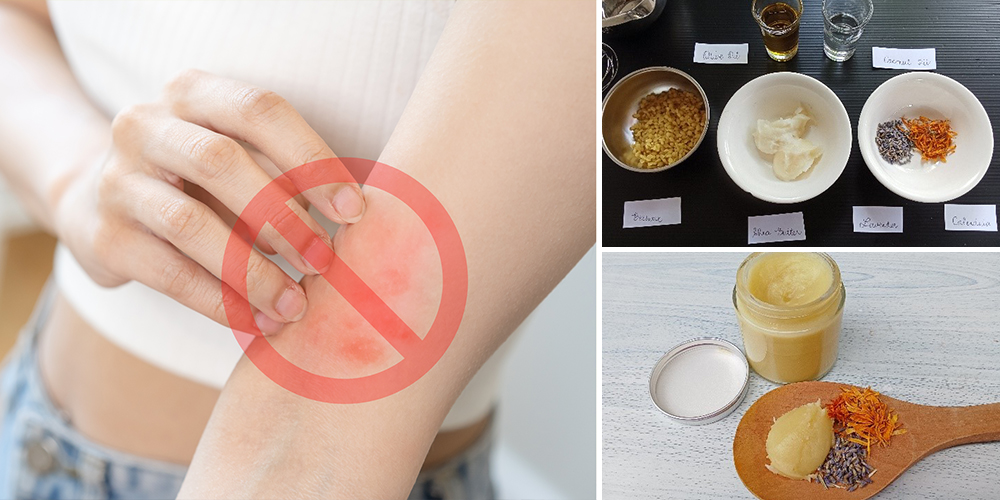
Calendula and Lavender Herbal Salve for Insect Rashes
Bugs and insects are rampant during the spring and summer. These seasons require you to have an active insect deterrent to keep them at bay and topicals to ease the bites and stings. The market has many products for soothing an insect bite, but some ingredients may be more harmful to your skin. Did you know that you can make your own herbal salve that is just as effective — and far gentler? One of the best is the Calendula and Lavender Herbal Salve for Insect Rashes, a calming blend that eases irritation while nourishing your skin naturally.
Insect Bites Treatment
Insect bites, particularly those from mosquitoes, are very common and are annoying. However, not all insect bites are harmless.
An insect bite and sting may contain venom, toxic substances and pathogens that can cause serious problems. Mosquitoes may also host malaria and dengue fever, ticks carry Lyme disease, while mites can spread scabies. Yellowjackets and some spider bites may even trigger allergic reactions.
Minor insect bites are managed by applying cold packs, painkillers, antihistamines or hydrocortisone creams on the affected area. Diluted essential oils and herbal salves also work wonders against them.
Benefits of the DIY Lavender-Calendula Salve
Calendula and lavender are two of the best healing herbs for topical problems and insect bites. They contain volatile oils that repel insects and treat skin problems that the stings may leave behind.
Prevent Insect Bite Infection
A salve of calendula and lavender can be used against bee stings, mosquito bites, spider bites and ant bites. It offers relief and prevents infection, which may occur when insects pierce the skin and introduce bacteria, parasites and viruses into the body.
An infection occurs when the skin gets punctured by scratching. Applying lavender calendula salve prevents harmful microorganisms from entering the skin to prevent the possibility of infection.
To make sure you avoid infection, you may add yarrow to your herbal blend. This botanical contains antibacterial properties. If you want to target more than your itch, yarrow is your go-to remedy. Applied topically, Yarrow can be helpful in managing rashes, minor skin infections, wounds, and itching. It also helps you relax during illness and helps your body fight against fevers, colds and flu symptoms. The double-extracted tincture I’m using really takes the full spectrum of compounds that you need. Check it out here!
Reduce Itching
Calendula and lavender are great for reducing the itchiness from the bite. Lavender contains bioactive compounds like linalool and linalyl acetate, which are also effective against atopic dermatitis. Calendula has plant compounds preventing the body from releasing enzymes that may trigger allergic reactions and itching.
Alleviate Pain and Inflammation
Calendula and lavender contain compounds that may help numb the bite site and stop the inflammation. The linalool in lavender helps speed up healing and the flavonoids, saponins and triterpenoids in calendula prevent redness, swelling and irritation.
Repel Insects
Both aromatic herbs, calendula and lavender exude a scent that deters most insects. When used as a salve, they mask the smell of the skin and protect users from unwanted bug bites. Salves tend to stay longer on the skin to provide long-lasting protection.
Salves prepared from infused oil tend to have a weaker scent than essential oils. But, the infusion is still enough to deter annoying stingers.
You could avoid all this fuss about insect rashes if you would make sure there are no insects around. But would you really spray your home and the air you breathe with the chemicals found in anti-bug products? You might get intoxicated and have worse side effects than from bug bites. Before labs and chemicals, our ancestors knew what to use to keep insects away. Check out the natural insect repellant here!
Deep Moisturization
Aside from taming bug bites, calendula and lavender salve is also an excellent skin moisturizer. Its blend of beeswax, shea butter, calendula and lavender is great for soothing and softening dry skin. A deeply moisturized skin makes it less prone to irritations.
How to Make a Calendula and Lavender Salve for Insect Bites
Herbal healing salves are extensively used for many types of skin issues. Healing salves are infused with healing herbs that target a specific skin problem.
The Calendula and Lavender herbal salve for insect rashes is versatile and can be used for various types of skin irritations, not just insect bites.
The relaxing aroma of lavender and the therapeutic properties of calendula may help induce a deep and restful sleep. It can also be used for soothing burns and sunburns.
A salve is easy to prepare. For this all-natural recipe, the ingredients that we need are:
Carrier Oil
Carrier oils carry the herbal oils into the skin. The best carrier oils for a salve are those that possess excellent therapeutic properties with no to mild scents. Olive and coconut oils are great options because they have strong anti-inflammatory properties and can treat irritations.
Tree nut oils like argan, sweet almond and apricot are also good carrier oils. However, they are not suitable for people with nut allergies.
Calendula Petals and Lavender Flower Buds
The dried blossoms of calendula and lavender are infused into the oil to extract its therapeutic benefits. You can purchase it from many online stores. Essential oils can also be used in salves instead of infused oils. However, they are highly concentrated and should be used sparingly, diluted in a carrier oil.
Infused calendula and lavender flowers are gentler and safe for all skin applications, making the salve versatile for various applications. Calendula and Lavender Herbal Salve for Insect Rashes
Shea Butter
Shea butter adds a nice feel and consistency to the salve. It also contributes to the medicinal properties of calendula and lavender by reducing skin swelling in bug bites and other skin conditions.
Shea butter also acts as an emollient that softens and smoothens dry skin by trapping moisture. It is non-comedogenic, which means it does not clog the pores and is less likely to cause acne.
Beeswax
Beeswax is used as an emulsifier, thickener and stiffener in salves and balms. It may also help in soothing irritated skin and form a protection barrier.
A beeswax can be white or yellow, and the choice depends on the consistency and appearance you want for your salve. Yellow beeswax has a natural fragrance and produces a rustic yellow and softer finished product. White beeswax is refined, scentless, and colorless for a firmer and smoother salve.
If you’re like me, you’ve probably tried countless remedies for insect rashes. But sometimes, despite our best efforts, the itching persists, and scratching only makes it worse. This can lead to skin damage, breaking down the barrier that protects us from infections and irritants. Homemade solutions are effective and all-natural, but they take time and effort to make. I’ve found that when I need something quick and effective, the All-Purpose (First Aid) Salve works wonders. It’s my go-to for when my skin needs extra care. You can see how others are using it too—it’s more versatile than you’d expect!
Calendula and Lavender Salve
Ingredients
- 3 tbsp olive oil
- 2 tbsp coconut oil
- 1/2 tbsp dried lavender buds
- ½ tbsp dried calendula petals
- 2 tbsp shea butter
- 2 tbsp beeswax (and some extra for adjusting the consistency)
Steps
- Gently heat olive and coconut oils in a double boiler or a heat-resistant pan over a pan of simmering water.

- Add the dried lavender buds and calendula petals and let stand for at least 30 minutes.

- Strain the infused oil.

- Put the infused oil back into the double boiler and add the beeswax until the beeswax melts.

- Remove from heat and add the shea butter. Stir well until it melts and the product is well combined.

- Test the firmness and consistency of the salve by scooping a small amount with a spoon and letting it set in a freezer for a minute. If you want a firmer product, reheat the salve and add more beeswax.

- If you are happy with its consistency, pour the salve into a glass jar or emollient jar and let it cool completely.

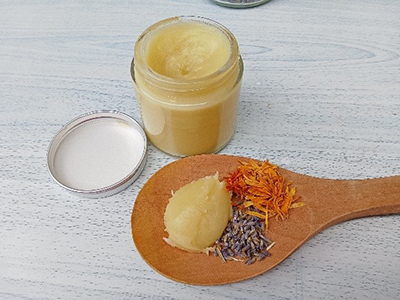 To use the Calendula and Lavender herbal salve for insect rashes: Wash the insect bite area thoroughly with water and soap. Apply the Yarrow Tincture to make sure there’s no bacteria left around. Rub the calendula and lavender salve directly into the bite site. Apply a small amount several times as needed or until the bite is healed such as in the case of spider bites.
To use the Calendula and Lavender herbal salve for insect rashes: Wash the insect bite area thoroughly with water and soap. Apply the Yarrow Tincture to make sure there’s no bacteria left around. Rub the calendula and lavender salve directly into the bite site. Apply a small amount several times as needed or until the bite is healed such as in the case of spider bites.
You can also use this product for other topical problems like sunburns, ingrown hairs, splinters, atopic dermatitis, and many others.

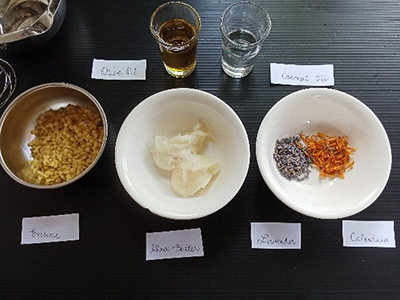
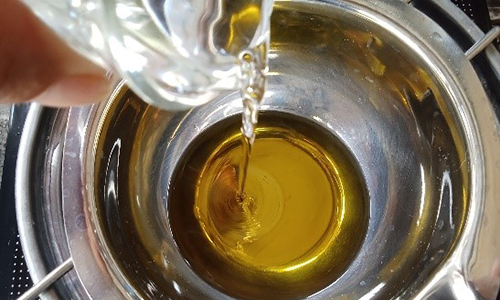
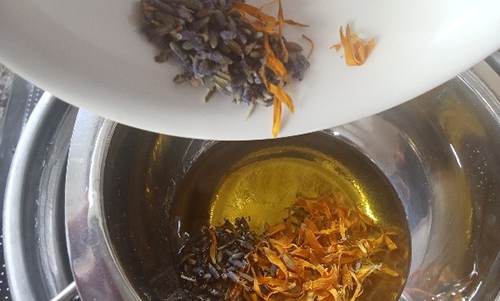
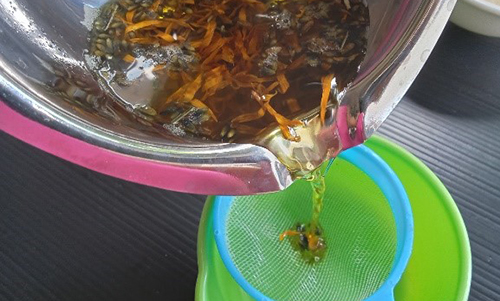
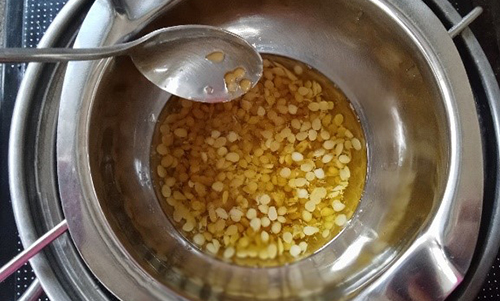
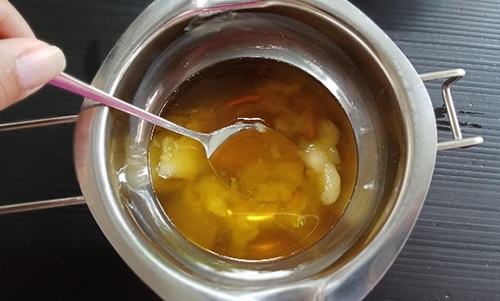
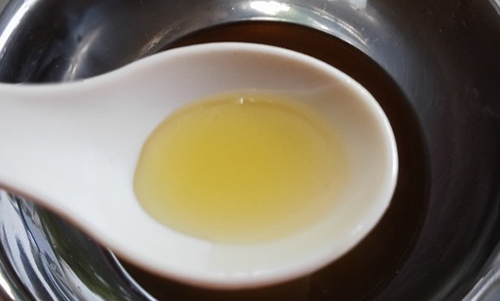
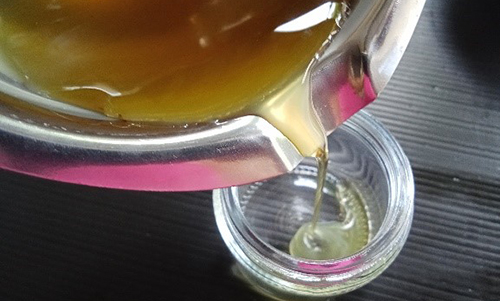
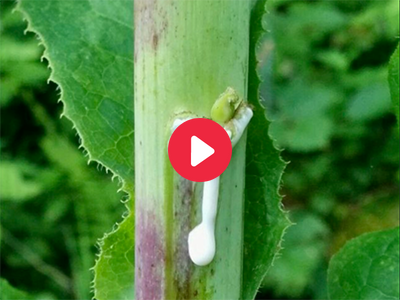

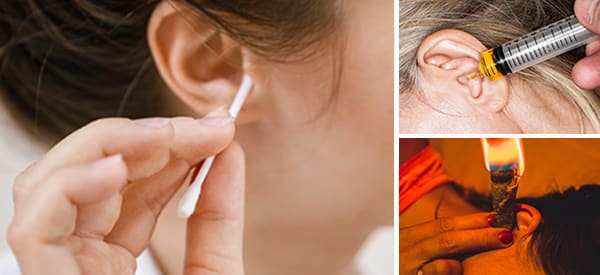

Awesome information❣️ I’m harvesting my herbs. Thank you for the instructions on how to better use them 🥰
Thanks for that, it will so help when our Australian summer hits 🥰
Could we have a recipe for your first aide salve. It’s been mentioned a few times in the words but I haven’t seen a recipe. Regards Dave Walker. I’ve got some calendula in oil saoking/ infusing.